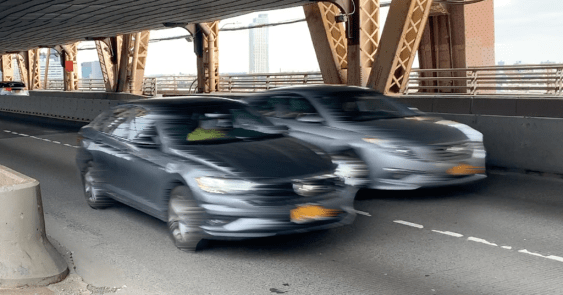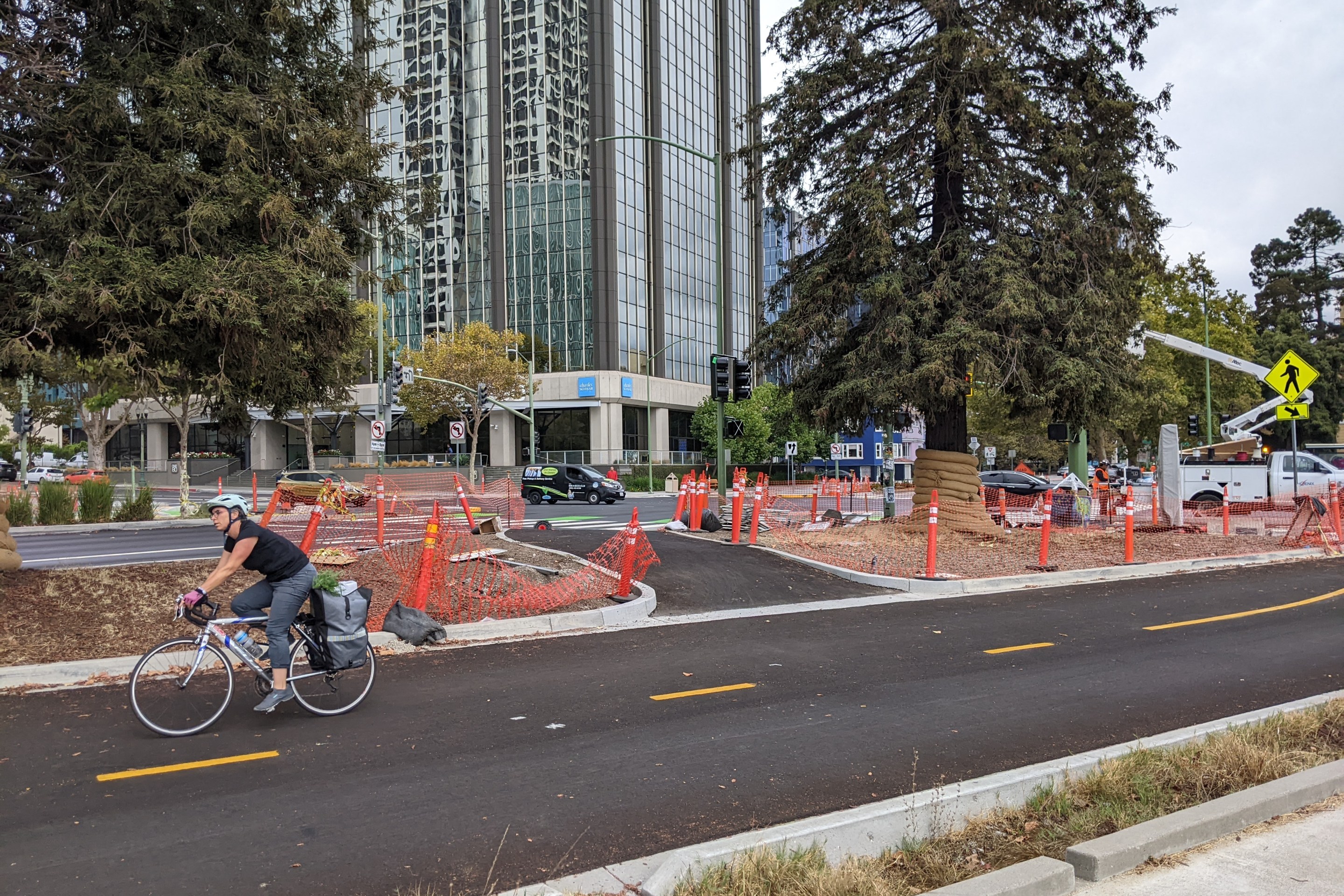What impact will self-driving cars have on cities?

The range of potential outcomes is enormous. In the best-case scenario, private car ownership gives way to shared fleets of autonomous cars, freeing up vast amounts of land that used to be devoted to vehicle storage.
Then there's the scenario promoted by Tesla, in which everyone owns their personal autonomous vehicle. The consequences would be frightening, says Yonah Freemark at the Transport Politic:
Robin Chase, the founder of Zipcar, has laid out an intuitive way of understanding this issue using a binary “heaven or hell” construction (note: I’ve interviewed her in the past on how autonomous cars will impact the transit system). According to this formulation, we could have “heaven” if we had fleets of shared, electric, driverless cars powered by renewable energy, plus a redistributive economy that ensures that people who once had jobs in the transportation sector have access to a minimum income. On the other hand, we could have “hell” if everyone owns his or her own driverless car that does our errands, parks our cars, and circles the neighborhood waiting for us to need it again.
Tesla seems to be resolving this issue for us.
In the video the company released announcing its new technology, a man enters a car outside of his bucolic suburban home, from which it whisks him away -- without him touching the steering wheel --to the (also suburban) Tesla factory. Once there, he gets out of the car, at which point it goes off to find a parking space, where it will presumably sit all day until he’s ready to go back home.
One promotional video is hardly enough to make an assessment about the future, but the imagery Tesla is projecting, which is of an anti-urban, individualized nature, certainly aligns closely with Chase’s “hell” scenario. After all, multiplied across the millions of people living in a metropolitan area, Tesla’s independently owned self-driving cars would simply replicate much of the existing transportation system, except this time, unlike for current drivers, they’ll have no incentive to minimize driving time -- since automated cars can go driving off, circling the block or finding some distant parking space, without inconveniencing the driver.
Freemark says we shouldn't accept that. Public policy should shape the driverless car future:
It isn’t a random coincidence that people commute in very different ways in New York and Dallas. We do not have to accept the “hell” scenario of Tesla’s creation -- but working to produce “heaven” requires more than resting our hopes on the economic benefits of sharing vehicles versus owning our own. Advancing positive change for our cities means recognizing the trouble with simply accepting whatever is most appealing on the market, or whatever the market leaders are promoting.
In the course of my work developing Transport Databook (which, if you haven’t checked it out yet, is a resource for up-to-date transportation data), I pulled together information on changes in transportation mode shares in U.S. cities over time. I was sadly unsurprised to find that the share of people commuting by car in the country’s ten biggest cities is little changed from what it was in 1970. The level of car reliance is a fact of life, one might say. Given public interest in autonomous vehicles, cities should give up on bus lanes, abandon pedestrianized streets -- just give people what they want.
Yet examining similar data for Paris and London suggests that, in fact, policy can matter. In those wealthy cities, the level of automobile travel has declined quite substantially since the early 1990s. That decline is not an accident. It is the product of clear-headed policies that implemented a vision of the city where travel by walk, bike, and transit is prioritized; the recent pedestrianization of the Seine highway and the plans for new cross-Thames pedestrian bridges, for example, reinforce those policies.
Elsewhere on the Network today: Mobility Lab reports that Arlington, Virginia, is beginning the process of reforming its residential parking policies. Systemic Failure says that changes to the boarding platforms for California High Speed Rail will effectively cut capacity in half. And Seattle Transit Blog fact checks the recent Seattle Times non-endorsement of the $54 billion light rail expansion plan on the November ballot.





